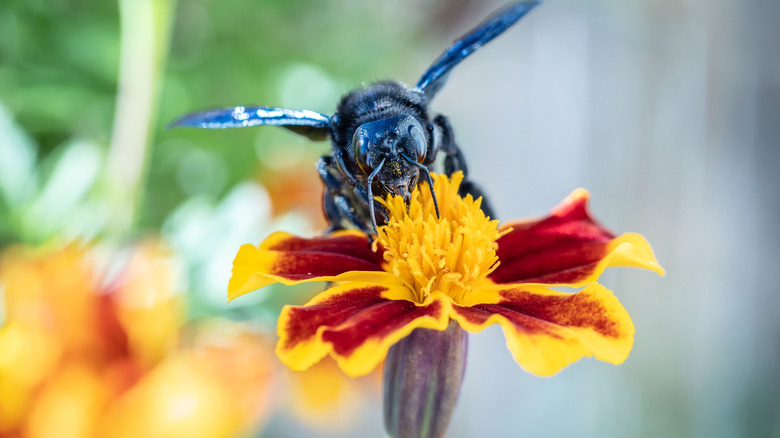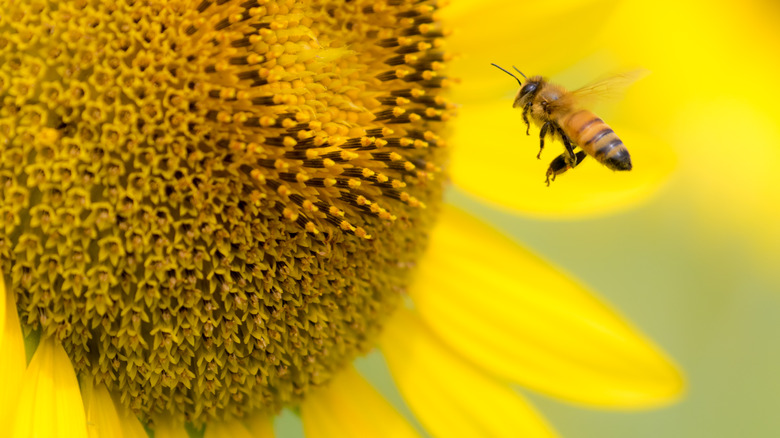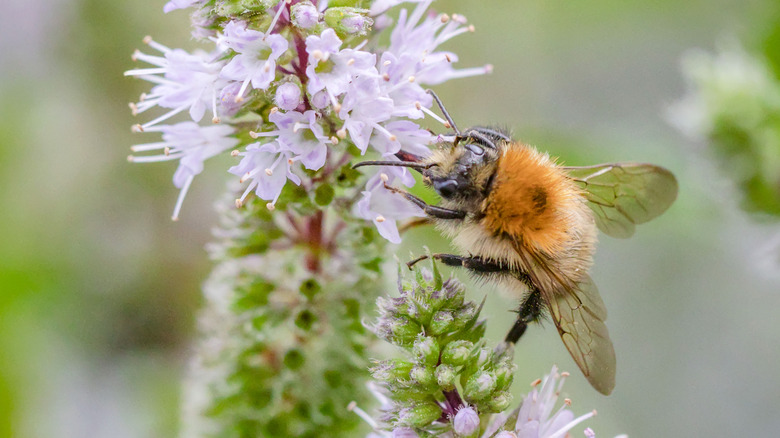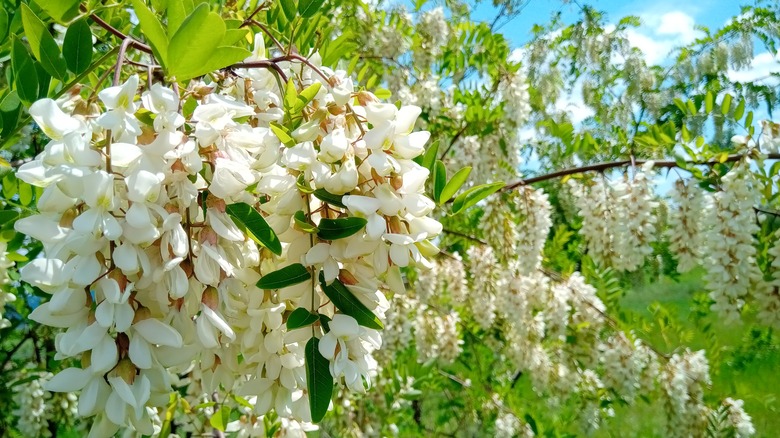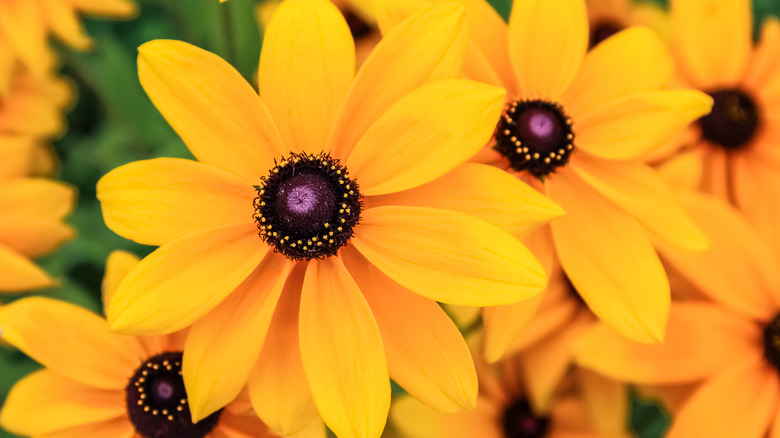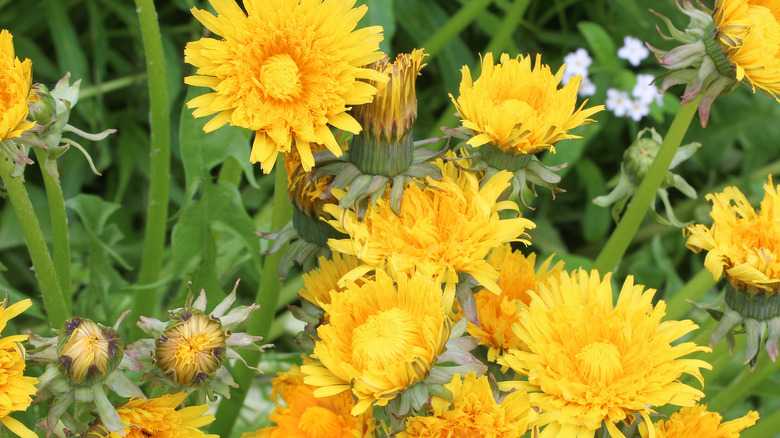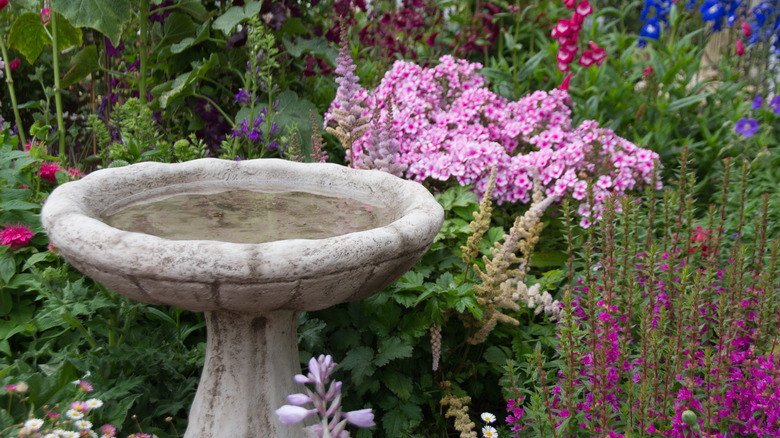How To Bring More Bees Into Your Yard And Garden, According To Experts
Though you may have run from bees when you were younger, today, you may want to do whatever you can to welcome them into your yard and garden. Bees are critical components of the ecosystem, and encouraging them to visit your yard may help you with your garden's growth and overall health. Blair's Farm & Fleet states that bees are critical pollinators, helping to encourage the growth of flowers and plants by moving from one to the next. As bees seek out the nutrition they need in the nectar of these plants, they are helping to cross-pollinate and support your garden's future.
How do you get more bees into your yard, though? To find out more about that process and the options available, we spoke to two experts in an exclusive interview with House Digest. Frank Mortimer is a master beekeeper, president of the New Jersey Beekeepers Association, and author of "Bee People and The Bugs They Love," and Charlotte Ekker Wiggins is a master beekeeper and master gardener from Home Sweet Bees.
Sewing fall-blooming plants
Though your garden may be blooming throughout the spring and summer months, you can still encourage bees into your yard during the fall months. Frank Mortimer states, "The reason bees make honey is so they have food to eat through the winter. Choosing plants that bloom in late summer/fall will provide the bees with a food source they can visit when they need it the most, ensuring they will have plenty of honey to survive the winter."
When your other blooms are dying off after the warmer months, you don't have to bid the bees farewell for the summer. They may even seek out your yard when others no longer meet their needs. Though you'll need to plan to choose the best plants for your area to attract bees, Mortimer has a few suggestions on which to choose for the best results, "The three-best late-blooming plants are: Sunflowers, Goldenrod, and Purple Aster." There could be other options that work well in your local area.
Know what's native
One of the keys to remember when choosing plants or other items for your yard is that bees will thrive on what is native to the area. That is, work to skip the plants that could be considered invasive species. Charlotte Ekker Wiggins states, "Plant more native trees, shrubs, and flowers. Native bees have a codependent relationship with some plants, so planting native plants mean you will attract and feed native bees."
The question is, how do you know what's native to your area that could attract the bees? Native Backyards offers some insight, including turning to the National Wildlife Federation to learn what's commonly found in your area. It is also possible to explore the Lady Bird Johnson Wildflower Center's database, which offers insight into what plants live in any state. There could also be a local plant society near you that can offer guidance, as can a native plant nursery if one is close by.
Plant a tree
When considering what to plant, you may want to choose a long-lasting solution for your home yard or garden. Mortimer explains, "It takes two million flowers to make one pound of honey, which is why trees are an excellent nectar source for bees." Though you'll want to learn a bit more about which trees to choose, Mortimer has a few to recommend, stating, "The two best 'bee trees' are Linden and Black Locust, as both types of trees produce an abundance of nectar."
Take into consideration when the trees may help you attract bees to your yard. For example, if you're growing a vegetable garden, having bees present in the spring and summer is a must. Mortimer shares, "Plus, they bloom in spring/early summer when bee colonies have the highest number of forager bees to collect the most pollen and nectar. Just a few Linden and Black Locust trees can produce enough nectar to support an entire honeybee colony."
Plant perennial plants
As you are working on choosing plants to add to your landscape and create the look you want for your home, consider how well each one of them contributes to your goal of creating a bee-friendly environment. That includes choosing perennial plants wisely. Wiggins shares some tips. "Plants that return year after year are excellent bee food sources and attract many pollinators, including bees."
You may find a range of options local to you to consider, but Wiggins recommends a few specific options that work the best, sharing, "Some that also happen to be natives to North America include New England Asters, Purple Coneflowers, and Black-Eyed Susans." These can not only help to support the growth of your bee population, but they can often add a nice bit of beauty to your space on an ongoing basis. Be sure to research which plants could do well in your local environment and choose varieties specifically suited for attracting bees.
Plant some bee-worthy weeds
Though most people think of flowers and trees, don't rule out weeds, recommends Mortimer, stating, "In addition to buying plants that support honeybees, remember that bees love dandelions, clover, and milkweed. Letting these plants flower in your yard will attract bees and provide them with a great food source." Though it could be hard to just overlook what many think are unsightly weeds growing in the grass, doing so offers clear benefits not just to your garden but the plant overall.
"Dandelions are some of the first plants to bloom in the spring, and by letting them grow in your yard, you will give bees a boost as they're coming out of winter and desperately searching for pollen and nectar," reveals Mortimer. You may not have thought of the benefit of planting weeds, but even if you're not willing to seek out weeds to add, just reduce the need to kill what's naturally growing in your yard.
Add birth baths with rocks and twigs
Though these recommendations center around the need to add plants, there are other steps you can take to encourage bees to visit. Wiggins recommends the use of bird baths. She explains, "Although we think of bird baths for only birds, they also provide a water source for a number of other garden visitors, including bees." If you want to increase the presence of wildlife in your area, create a water source that will attract them.
Also, think about creating the ideal environment to encourage bees to stop at the bird bath. "The rocks and twigs will help them have safe landing spots to get a drink and gather water to take back to their hives," recommends Wiggins. Just place a few pieces throughout the bird bath slightly elevated from the level of the water to create a stopping spot for bees and other critters looking for a refreshing drink. This also helps to make it seem a bit more natural in your landscape.
